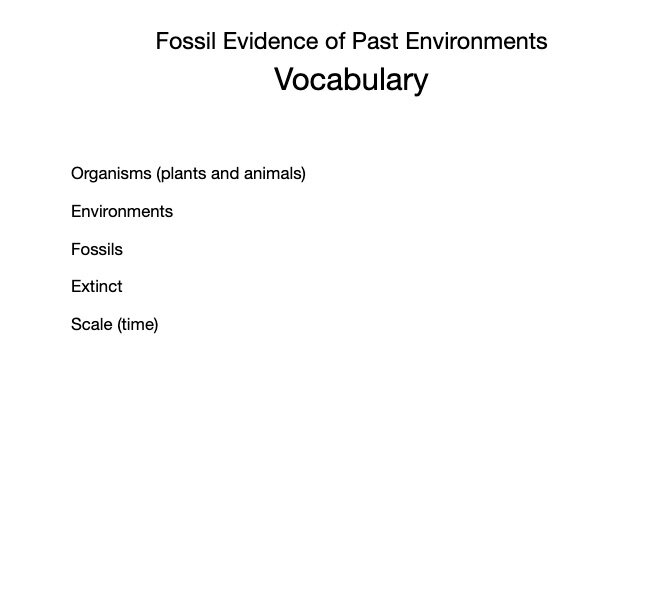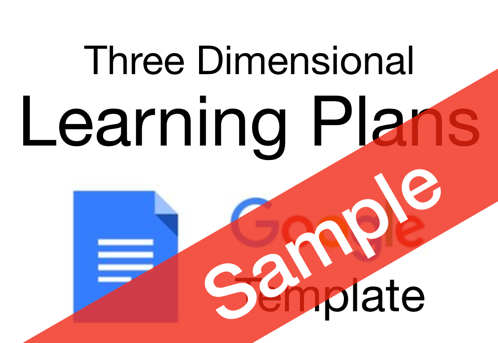3-LS4-1: Fossil Evidence of Past Environments
Analyze and interpret data from fossils to provide evidence of the organisms and the environments in which they lived long ago. (Scale, Proportion, and Quantity)
Clarification Statement: Examples of data could include type, size, and distributions of fossil organisms. Examples of fossils and environments could include marine fossils found on dry land, tropical plant fossils found in Arctic areas, and fossils of extinct organisms.
Assessment Boundary: Assessment does not include identification of specific fossils or present plants and animals. Assessment is limited to major fossil types and relative ages.
Science Practices
Analyzing and Interpreting Data
Disciplinary Core Ideas
LS4.A: Evidence of Common Ancestry and Diversity
Crosscutting Concepts
Scale, Proportion, and Quantity
Assessments
The Wonder of Science Assessments
Shared Assessments
The following assessments were shared by teachers implementing the NGSS. Many of these are drafts and should be used accordingly. Feel free to improve these assessments or contribute your own. Learn more here.
Instructional Resources
Mini Lessons
The Wonder of Science Resources
Shared Resources
Anchor Charts
Phenomena
Videos
Learning Plans
Storylines
Common Core Connections
ELA/Literacy
RI.3.1 - Ask and answer questions to demonstrate understanding of a text, referring explicitly to the text as the basis for the answers.
RI.3.2 - Determine the main idea of a text; recount the key details and explain how they support the main idea.
RI.3.3 - Describe the relationship between a series of historical events, scientific ideas or concepts, or steps in technical procedures in a text, using language that pertains to time, sequence, and cause/effect.
W.3.1 - Write opinion pieces on topics or texts, supporting a point of view with reasons.
W.3.2 - Write informative/explanatory texts to examine a topic and convey ideas and information clearly.
W.3.8 - Recall information from experiences or gather information from print and digital sources; take brief notes on sources and sort evidence into provided categories.
Mathematics
3.MD.B.4 - Generate measurement data by measuring lengths using rulers marked with halves and fourths of an inch. Show the data by making a line plot, where the horizontal scale is marked off in appropriate units— whole numbers, halves, or quarters.
MP.2 - Reason abstractly and quantitatively.
MP.4 - Model with mathematics.
MP.5 - Use appropriate tools strategically.
*Next Generation Science Standards is a registered trademark of Achieve. Neither Achieve nor the lead states and partners that developed the Next Generation Science Standards were involved in the production of this product, and do not endorse it. Visit the official NGSS website.




























